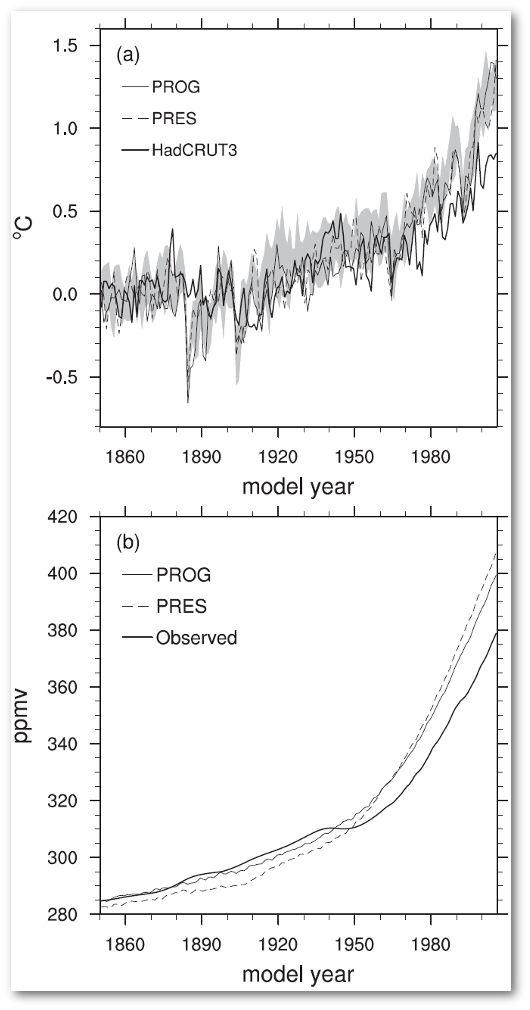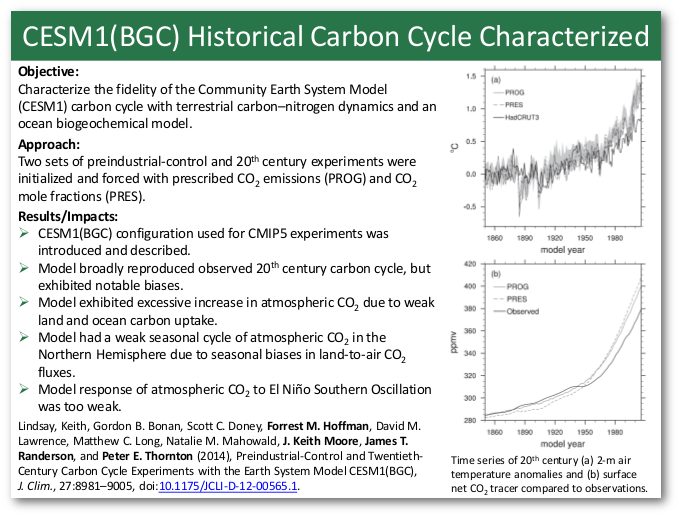Research Highlights
CESM1(BGC) Historical Carbon Cycle Characterized
December 15, 2014
Objective
Characterize the fidelity of the Community Earth System Model (CESM1) carbon cycle with terrestrial carbon--nitrogen dynamics and an ocean biogeochemical model.
Approach
Two sets of preindustrial-control and 20th century experiments were initialized and forced with prescribed CO2 emissions (PROG) and CO2 mole fractions (PRES).
|
Results/Impacts
- CESM1(BGC) configuration used for CMIP5 experiments was introduced and described.
- Model broadly reproduced observed 20th century carbon cycle, but exhibited notable biases.
- Model exhibited excessive increase in atmospheric CO2 due to weak land and ocean carbon uptake.
- Model had a weak seasonal cycle of atmospheric CO2 in the Northern Hemisphere due to seasonal biases in land-to-air CO2 fluxes.
- Model response of atmospheric CO2 to El Niño Southern Oscillation was too weak.
Lindsay, Keith, Gordon B. Bonan, Scott C. Doney, Forrest M. Hoffman, David M. Lawrence, Matthew C. Long, Natalie M. Mahowald, J. Keith Moore, James T. Randerson, and Peter E. Thornton. December 15, 2014. “Preindustrial-Control and Twentieth-Century Carbon Cycle Experiments with the Earth System Model CESM1(BGC).” J. Clim., 27(24):8981–9005. doi:10.1175/JCLI-D-12-00565.1.

